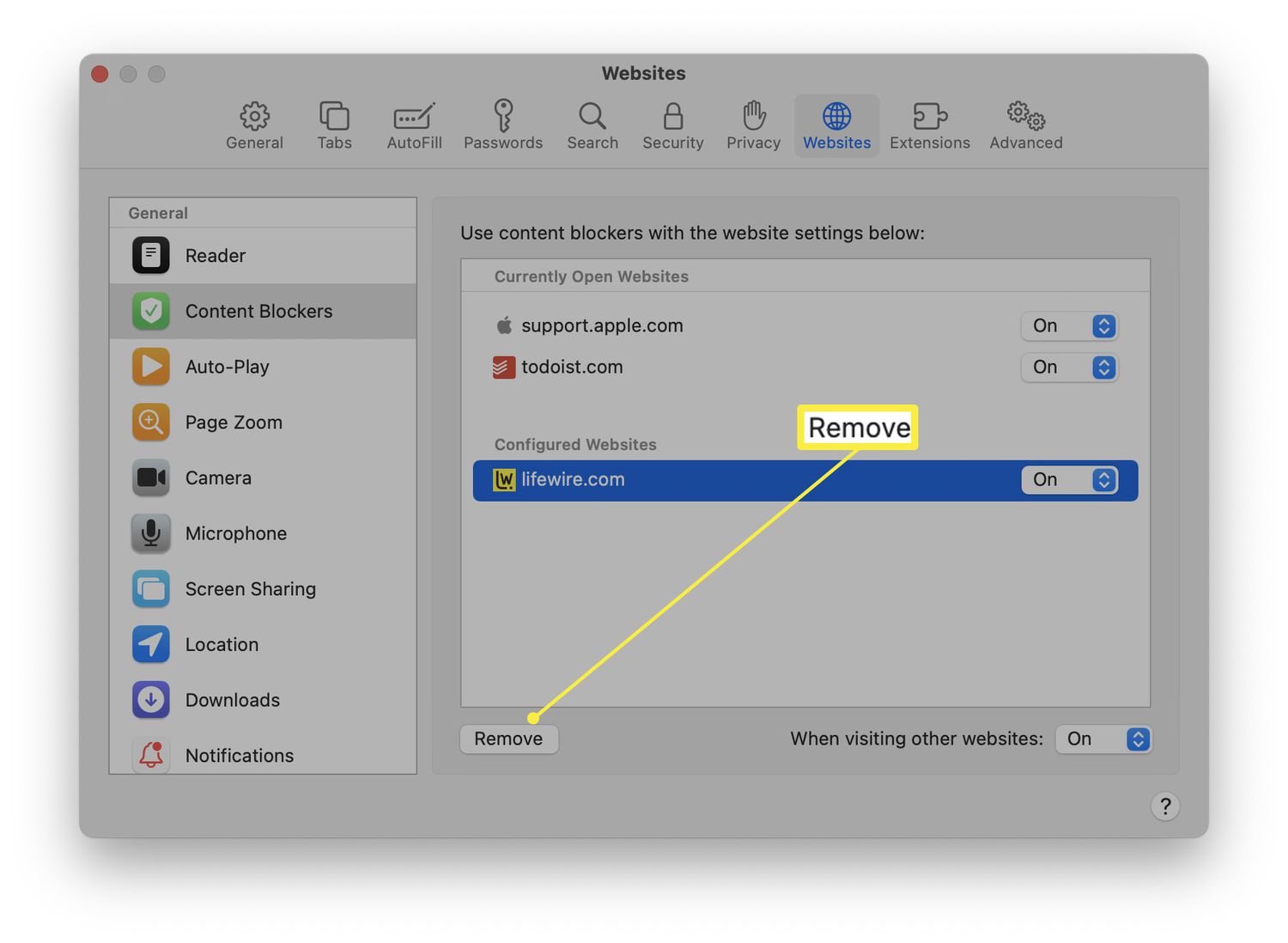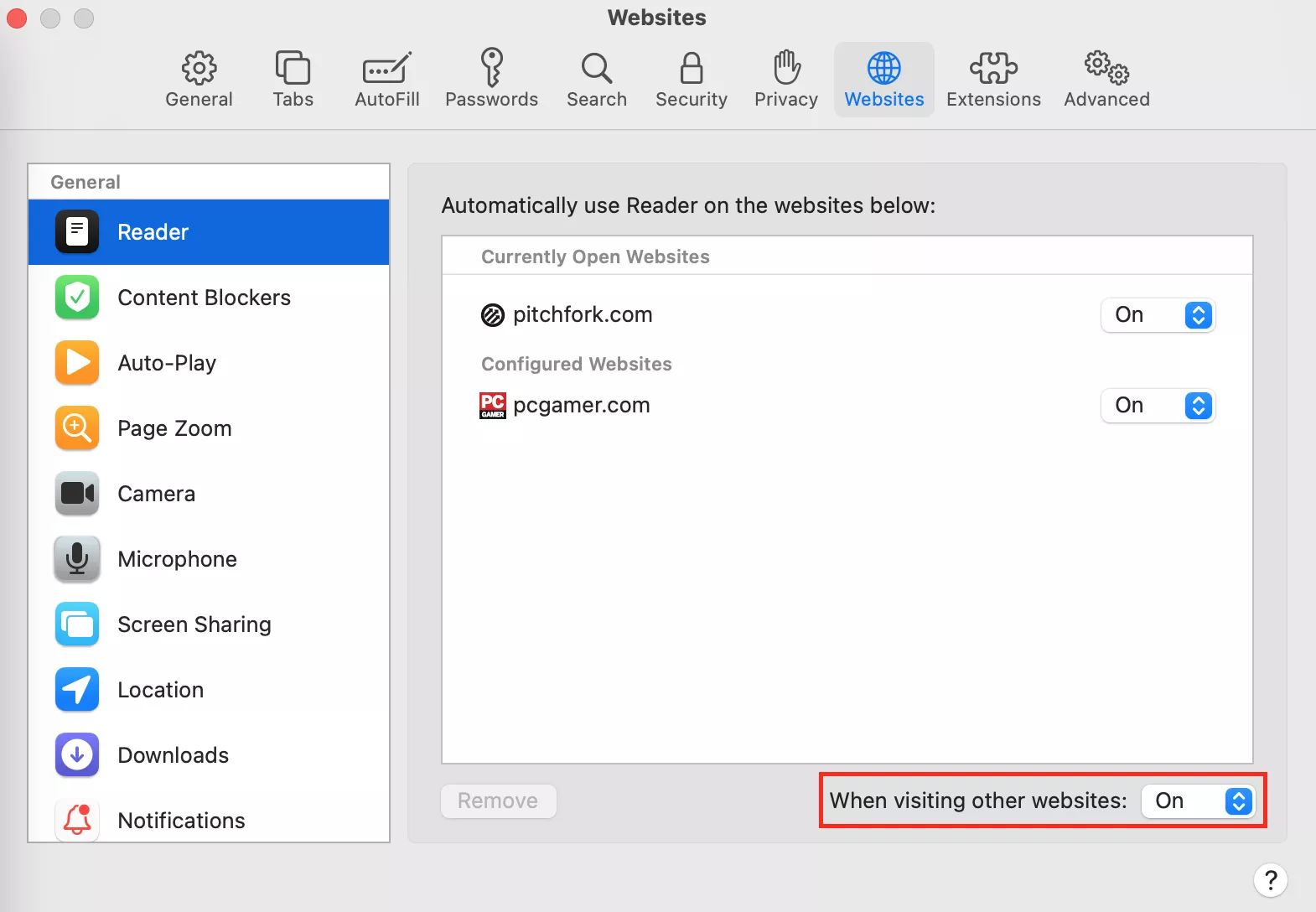Introduction
Safari, the sleek and innovative web browser developed by Apple, has been a prominent player in the browsing arena since its launch in 2003. With its seamless integration across Apple devices and a focus on user privacy, Safari has garnered a loyal following among Apple enthusiasts and casual users alike. As we delve into the intricacies of this browser, we will explore its evolution, features, performance, security, and compatibility to provide a comprehensive understanding of its capabilities and limitations.
Safari's journey from its inception to its current iteration has been marked by a commitment to delivering a user-centric browsing experience. From its early days as a Mac-only browser to its expansion to iOS and Windows platforms, Safari has continuously evolved to meet the ever-changing demands of the digital landscape. Its user-friendly interface and robust performance have positioned it as a formidable contender in the browser market.
In this exploration, we will uncover the unique features that set Safari apart from its competitors. From its intuitive tab management and reader mode to its seamless synchronization with iCloud, Safari offers a host of functionalities designed to streamline the browsing experience. Additionally, its emphasis on energy efficiency and battery optimization makes it a compelling choice for users seeking a browsing solution that complements their Apple ecosystem.
Furthermore, Safari's performance capabilities have been a focal point of its appeal. With a strong emphasis on speed and responsiveness, Safari has consistently delivered swift page loading and smooth navigation, enhancing the overall browsing experience for its users. Its integration of cutting-edge technologies, such as WebKit and JavaScript optimizations, underscores its commitment to staying at the forefront of web browsing advancements.
As we navigate through the intricacies of Safari, we will also delve into its robust security and privacy features. Apple's steadfast dedication to safeguarding user data and privacy is reflected in Safari's built-in privacy tools, intelligent tracking prevention, and sandboxing of websites, ensuring a secure and private browsing environment for its users.
Moreover, Safari's compatibility across various platforms and its seamless synchronization with Apple devices contribute to its appeal as a versatile and cohesive browsing solution. Whether on a Mac, iPhone, or iPad, Safari offers a consistent and integrated browsing experience, fostering a sense of continuity and convenience for users within the Apple ecosystem.
In the subsequent sections, we will embark on a comprehensive exploration of Safari's evolution, features, performance, security, and compatibility, shedding light on the factors that have contributed to its standing as a formidable browser in the digital realm.
History of Safari Browser
Safari, Apple's proprietary web browser, made its debut in 2003, marking a significant milestone in the company's foray into the realm of internet browsing. Initially exclusive to Mac OS X, Safari was introduced as a lightweight and efficient alternative to existing browsers, aiming to provide Mac users with a seamless and intuitive web browsing experience.
The genesis of Safari can be traced back to Apple's endeavor to address the limitations of existing browsers available for Mac users. Fueled by a commitment to innovation and user-centric design, Apple sought to develop a browser that not only complemented the Mac operating system but also set new standards for speed, efficiency, and overall user experience.
With its inaugural release, Safari garnered attention for its minimalist interface, swift page rendering, and robust performance. Its utilization of the WebKit rendering engine, known for its speed and adherence to web standards, set Safari apart from its competitors, positioning it as a formidable contender in the browser landscape.
As Safari evolved, it expanded its reach beyond the confines of Mac OS X, making its foray into the Windows and iOS ecosystems. This strategic expansion broadened Safari's user base, offering a consistent browsing experience across multiple platforms and devices, thereby reinforcing its position as a versatile and integrated browsing solution.
The evolution of Safari has been punctuated by a series of significant milestones, including the introduction of innovative features such as tabbed browsing, private browsing mode, and reader mode, all of which have contributed to enhancing the overall browsing experience for users.
Furthermore, Safari's integration with Apple's ecosystem, particularly its synchronization with iCloud, has reinforced its appeal among users invested in the Apple ecosystem. The seamless transfer of browsing history, bookmarks, and tabs across devices has underscored Safari's commitment to providing a cohesive and interconnected browsing experience.
In tandem with its evolution, Safari has continually embraced advancements in web technologies, ensuring compatibility with emerging web standards and optimizing performance to deliver a responsive and feature-rich browsing experience.
As Safari continues to evolve, its history stands as a testament to Apple's unwavering dedication to crafting a browser that not only aligns with its ethos of user-centric design but also sets new benchmarks for speed, security, and seamless integration across devices. The journey of Safari from its inception to its current iteration reflects a narrative of innovation, adaptability, and a steadfast commitment to redefining the browsing experience for users within the Apple ecosystem.
Features of Safari Browser
Safari browser boasts an array of features that cater to the diverse needs of users, setting it apart as a compelling browsing solution within the Apple ecosystem. From its seamless integration with Apple devices to its innovative functionalities, Safari offers a host of capabilities designed to elevate the browsing experience.
Intuitive Tab Management
Safari's intuitive tab management empowers users to effortlessly organize and navigate through multiple tabs, enhancing productivity and convenience. The ability to preview open tabs and organize them into tab groups facilitates efficient multitasking, allowing users to seamlessly switch between different browsing contexts.
Reader Mode
One of Safari's standout features is its reader mode, which provides a distraction-free reading experience by stripping away clutter from web pages, leaving behind a clean and focused view of the content. This feature is particularly beneficial for users seeking an unobtrusive and immersive reading experience across various websites.
iCloud Integration
Safari's seamless integration with iCloud enables the synchronization of browsing history, bookmarks, and tabs across Apple devices, fostering a cohesive and interconnected browsing experience. This feature ensures continuity and convenience for users, allowing them to seamlessly transition between devices without losing their browsing context.
Energy Efficiency
Safari's emphasis on energy efficiency and battery optimization aligns with Apple's commitment to delivering sustainable and eco-friendly technology. By minimizing energy consumption during browsing activities, Safari contributes to prolonged battery life on Apple devices, enhancing the overall user experience.
Privacy and Security Tools
Safari prioritizes user privacy and security through built-in features such as intelligent tracking prevention, which mitigates cross-site tracking, and sandboxing of websites to prevent unauthorized access to user data. These robust privacy measures underscore Safari's dedication to safeguarding user information and ensuring a secure browsing environment.
Web Technologies and Standards Compliance
Safari's adherence to web technologies and standards, coupled with its support for emerging web standards, ensures compatibility with a wide range of websites and web applications. This commitment to staying at the forefront of web advancements enables users to access and interact with diverse online content seamlessly.
Performance Enhancements
With a focus on speed and responsiveness, Safari leverages optimizations such as JavaScript performance enhancements and efficient page loading to deliver a swift and fluid browsing experience. These performance enhancements contribute to seamless navigation and interaction with web content, enhancing user satisfaction.
Safari's feature-rich offering, coupled with its seamless integration with Apple's ecosystem, positions it as a versatile and user-centric browsing solution. The amalgamation of innovative functionalities, privacy measures, and performance optimizations underscores Safari's commitment to redefining the browsing experience for users within the Apple ecosystem.
Performance of Safari Browser
Safari browser has consistently demonstrated a commitment to delivering exceptional performance, setting a high standard for speed, responsiveness, and efficiency. From its early iterations to its current version, Safari has continually evolved to optimize its performance, ensuring a seamless and fluid browsing experience for users within the Apple ecosystem.
One of the key pillars of Safari's performance is its utilization of the WebKit rendering engine, renowned for its speed and adherence to web standards. This foundational element empowers Safari to render web pages swiftly and accurately, contributing to a seamless browsing experience. The integration of WebKit underscores Safari's dedication to leveraging cutting-edge technologies to enhance performance.
Furthermore, Safari's JavaScript performance optimizations play a pivotal role in bolstering its responsiveness and interactivity. By leveraging advanced JavaScript engines, Safari executes complex web applications and dynamic content with remarkable speed, enabling users to engage with web content seamlessly. This emphasis on JavaScript performance underscores Safari's commitment to facilitating a fluid and immersive browsing experience.
Additionally, Safari's efficient page loading capabilities contribute to its overall performance prowess. With a focus on minimizing loading times and optimizing resource utilization, Safari ensures that web pages load swiftly, enabling users to access content without unnecessary delays. This streamlined approach to page loading enhances the overall browsing experience, aligning with Safari's commitment to speed and efficiency.
Moreover, Safari's integration of performance-enhancing technologies, such as WebAssembly and WebGPU, further amplifies its capabilities, enabling the execution of complex tasks and graphics-intensive applications with remarkable efficiency. These advancements underscore Safari's dedication to staying at the forefront of web technologies, ensuring that users can leverage the full potential of modern web applications without compromising performance.
Safari's performance extends beyond individual browsing sessions, as it also prioritizes energy efficiency and battery optimization. By minimizing energy consumption during browsing activities, Safari contributes to prolonged battery life on Apple devices, aligning with Apple's sustainability initiatives and enhancing the overall user experience.
In essence, Safari's unwavering focus on performance optimizations, ranging from rendering speed and JavaScript execution to efficient page loading and energy efficiency, underscores its commitment to delivering a superlative browsing experience. As Safari continues to evolve, its dedication to performance excellence remains a cornerstone of its appeal, positioning it as a formidable contender in the browser landscape.
This section provides a comprehensive overview of Safari's performance capabilities, highlighting its emphasis on speed, responsiveness, and energy efficiency, all of which contribute to a seamless and gratifying browsing experience for users within the Apple ecosystem.
Security and Privacy in Safari Browser
Safari browser places a paramount emphasis on safeguarding user data and privacy, setting a gold standard for security measures within the browsing landscape. Apple's unwavering commitment to user privacy is deeply embedded in Safari's DNA, reflected in its robust security features and proactive privacy tools.
One of Safari's standout security features is its intelligent tracking prevention, which mitigates cross-site tracking by restricting the ability of advertisers to monitor user activity across different websites. This proactive measure not only protects user privacy but also fosters a browsing environment free from intrusive tracking mechanisms, enhancing the overall user experience.
Safari's approach to privacy extends beyond intelligent tracking prevention, encompassing features such as sandboxing of websites to prevent unauthorized access to user data. By isolating websites within a sandboxed environment, Safari fortifies its defenses against potential security vulnerabilities, ensuring that user data remains secure and protected from external threats.
Furthermore, Safari's integration of privacy report functionality empowers users with insights into the trackers that have been blocked, thereby providing transparency and visibility into the browser's privacy protections. This transparency underscores Safari's commitment to empowering users with the information they need to make informed decisions about their online privacy.
In addition to proactive privacy measures, Safari prioritizes secure communication through its support for modern encryption standards, ensuring that data transmitted between the browser and websites is encrypted and safeguarded against interception. This encryption protocol enhances the security of user interactions with websites, bolstering confidence in the integrity of online communications.
Safari's steadfast dedication to security and privacy is further exemplified by its prompt adoption of security updates and patches, ensuring that users are shielded from emerging threats and vulnerabilities. This proactive approach to security maintenance underscores Safari's commitment to staying ahead of potential security risks, thereby fortifying its defenses against evolving cyber threats.
In essence, Safari's robust security and privacy features, ranging from intelligent tracking prevention and sandboxing to transparent privacy reporting and encryption support, collectively establish it as a paragon of user-centric security within the browsing sphere. As users navigate the digital landscape, Safari stands as a steadfast guardian of their privacy and security, empowering them to explore the web with confidence and peace of mind.
This comprehensive overview illuminates Safari's unwavering dedication to user privacy and security, underscoring its role as a trailblazer in fostering a secure and privacy-respecting browsing environment for users within the Apple ecosystem.
Compatibility of Safari Browser
Safari browser's compatibility across various platforms and its seamless synchronization with Apple devices underscore its versatility and cohesive integration within the Apple ecosystem. Whether users are navigating the web on a Mac, iPhone, or iPad, Safari offers a consistent and interconnected browsing experience, fostering a sense of continuity and convenience.
One of Safari's defining attributes is its native integration with Apple's ecosystem, ensuring that users can seamlessly transition between their devices without compromising their browsing experience. The synchronization of browsing history, bookmarks, and tabs through iCloud enables users to effortlessly pick up where they left off, irrespective of the device they are using. This seamless continuity aligns with Apple's ethos of delivering a harmonious and integrated user experience across its product lineup.
Furthermore, Safari's compatibility extends beyond the confines of Apple's devices, as it also offers a robust browsing experience on Windows platforms. While Safari's availability on Windows is limited to older versions, its compatibility with this operating system broadens its reach, catering to users who may have diverse device preferences.
Safari's adherence to web standards and its support for emerging technologies further enhance its compatibility with a wide array of websites and web applications. By aligning with industry standards, Safari ensures that users can access and interact with diverse online content seamlessly, without encountering compatibility issues that may hinder their browsing experience.
Moreover, Safari's commitment to optimizing web performance and rendering accuracy contributes to its compatibility with an extensive range of websites, including those featuring multimedia content, interactive applications, and dynamic web elements. This dedication to delivering a seamless and immersive browsing experience across diverse web environments underscores Safari's adaptability and compatibility with the evolving landscape of online content.
In essence, Safari's compatibility resonates with its commitment to delivering a cohesive and interconnected browsing experience across various platforms and devices. Whether users are immersed in the Apple ecosystem or exploring the web on Windows platforms, Safari's compatibility ensures that they can navigate the digital landscape with ease and fluidity, underscoring its standing as a versatile and user-centric browsing solution.
This comprehensive overview illuminates Safari's unwavering dedication to user privacy and security, underscoring its role as a trailblazer in fostering a secure and privacy-respecting browsing environment for users within the Apple ecosystem.
Conclusion
In conclusion, Safari browser stands as a testament to Apple's unwavering commitment to delivering a browsing experience that seamlessly integrates with the Apple ecosystem while prioritizing user privacy, security, and performance. From its inception in 2003 to its current iteration, Safari has evolved into a feature-rich and versatile browsing solution that caters to the diverse needs of users across Mac, iPhone, iPad, and even Windows platforms.
Safari's evolution has been marked by a relentless pursuit of innovation, as evidenced by its intuitive tab management, reader mode, and seamless synchronization with iCloud. These features not only enhance productivity and convenience but also foster a cohesive and interconnected browsing experience for users within the Apple ecosystem. The browser's emphasis on energy efficiency and battery optimization further aligns with Apple's sustainability initiatives, contributing to a holistic user experience.
Performance has been a cornerstone of Safari's appeal, with its utilization of the WebKit rendering engine, JavaScript optimizations, and efficient page loading capabilities ensuring swift and responsive browsing. The browser's commitment to staying at the forefront of web technologies, coupled with its energy-efficient design, underscores its dedication to delivering a seamless and gratifying browsing experience.
Moreover, Safari's robust security and privacy measures, including intelligent tracking prevention, sandboxing of websites, and transparent privacy reporting, establish it as a paragon of user-centric security within the browsing landscape. The browser's proactive approach to security maintenance and encryption support further fortifies its defenses against potential threats, empowering users to explore the web with confidence and peace of mind.
Safari's compatibility across various platforms, coupled with its adherence to web standards and support for emerging technologies, ensures a seamless and immersive browsing experience across diverse web environments. Whether users are navigating the web on a Mac, iPhone, iPad, or Windows platform, Safari's compatibility and adaptability underscore its role as a versatile and user-centric browsing solution.
In essence, Safari browser's journey from its inception to its current iteration reflects a narrative of innovation, adaptability, and a steadfast commitment to redefining the browsing experience for users within the Apple ecosystem. As users continue to embrace the digital landscape, Safari remains poised to deliver a browsing experience that seamlessly integrates with their Apple devices, prioritizes their privacy and security, and ensures a swift and seamless exploration of the web.

























